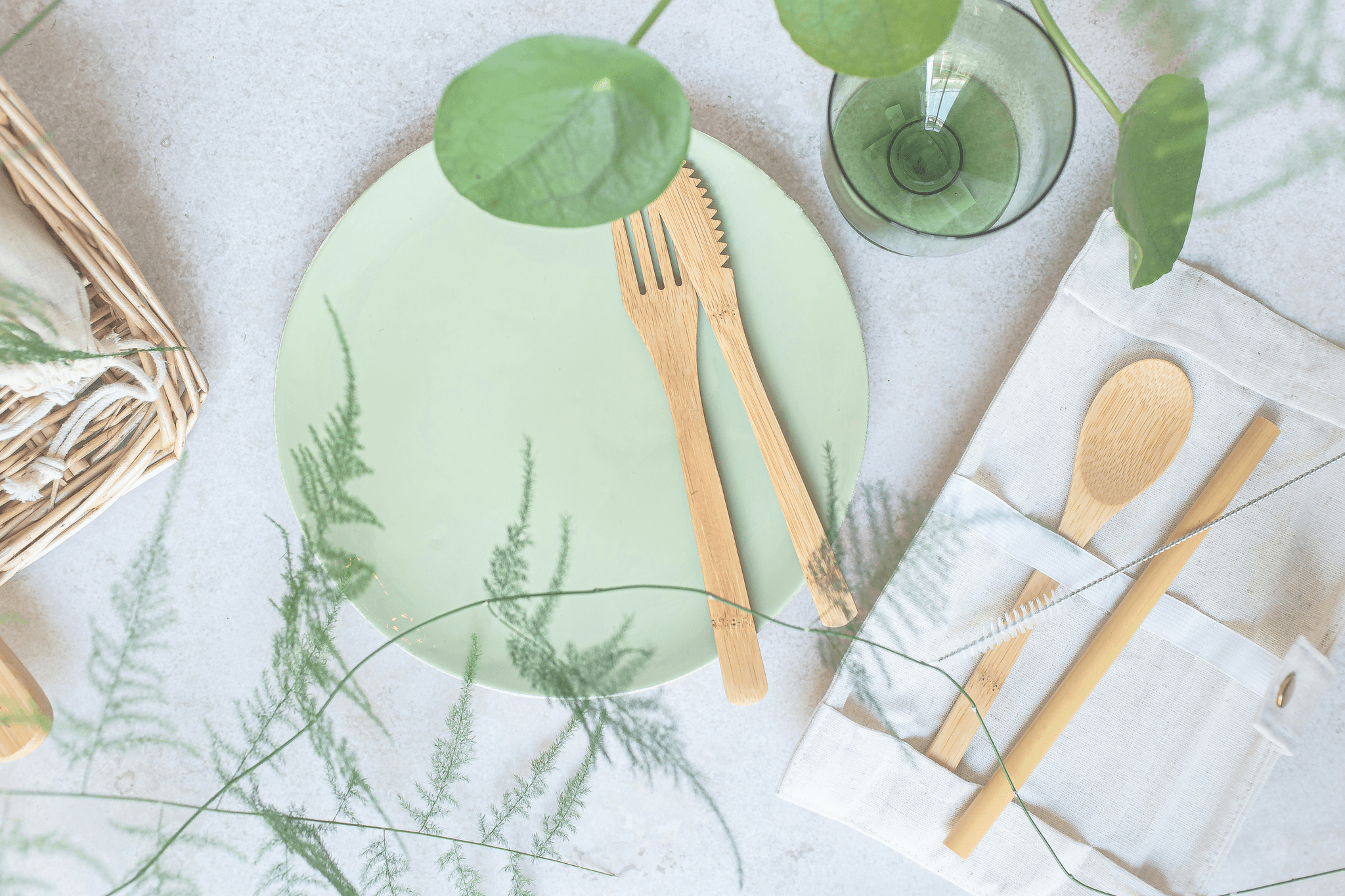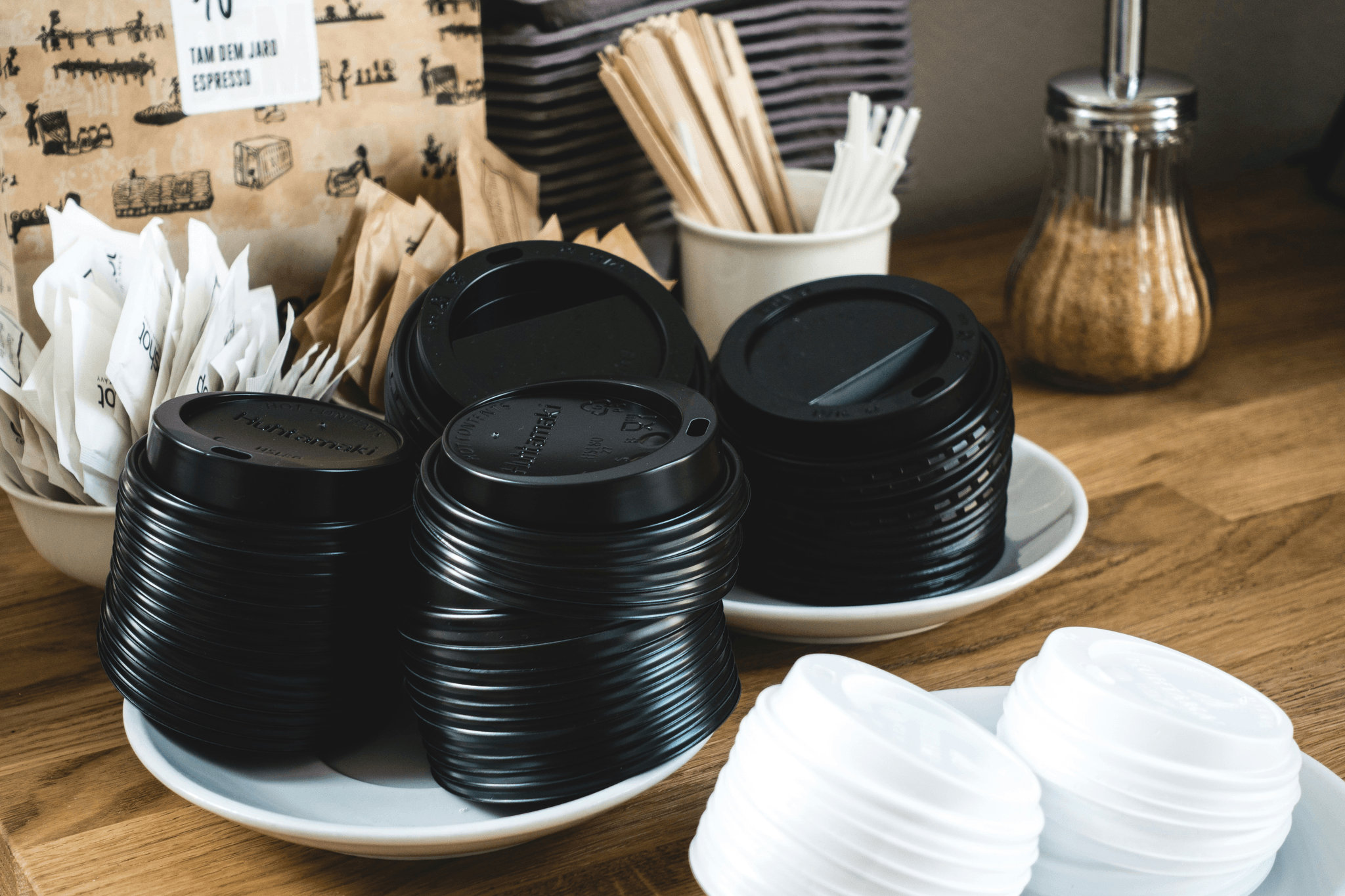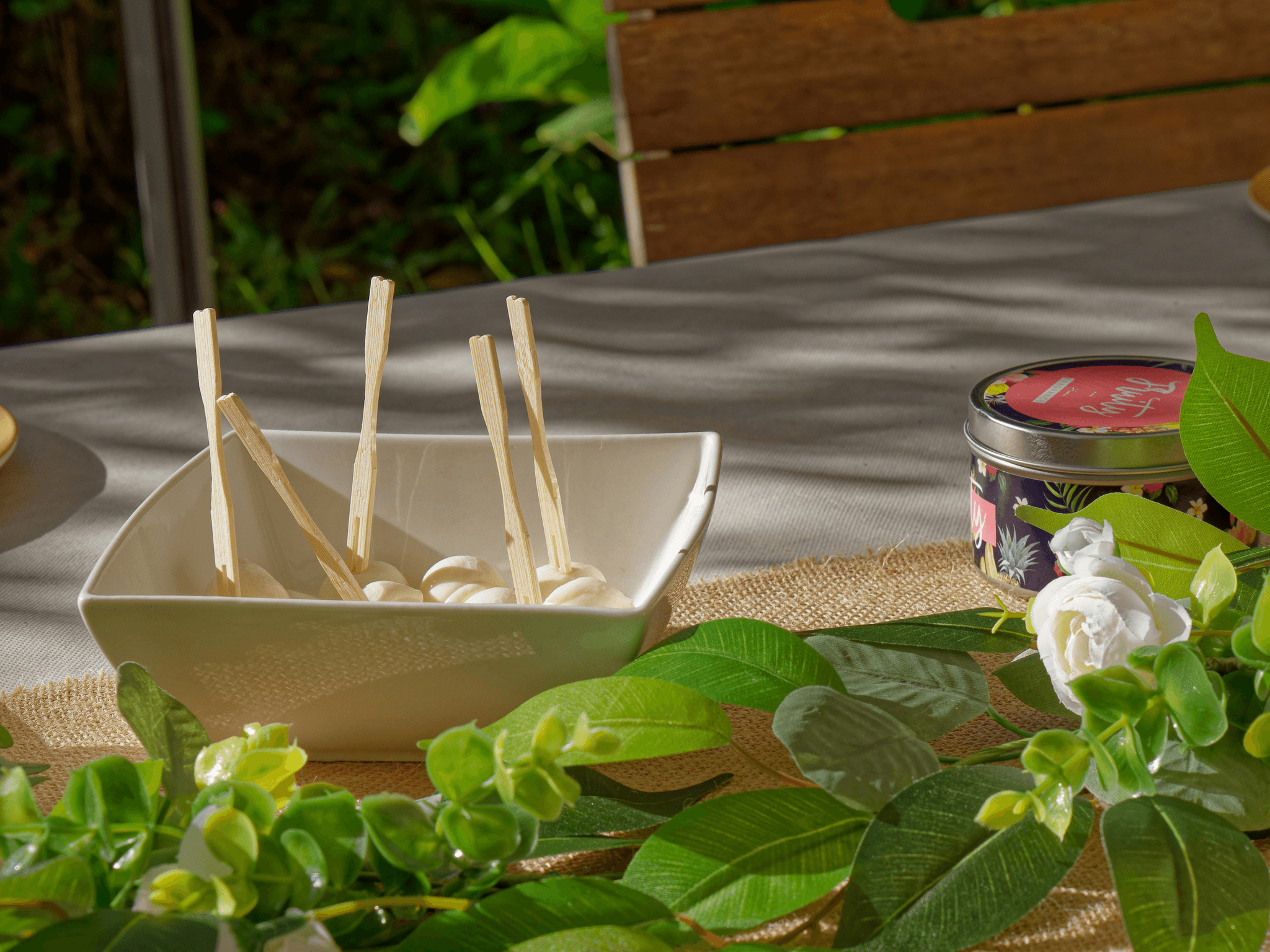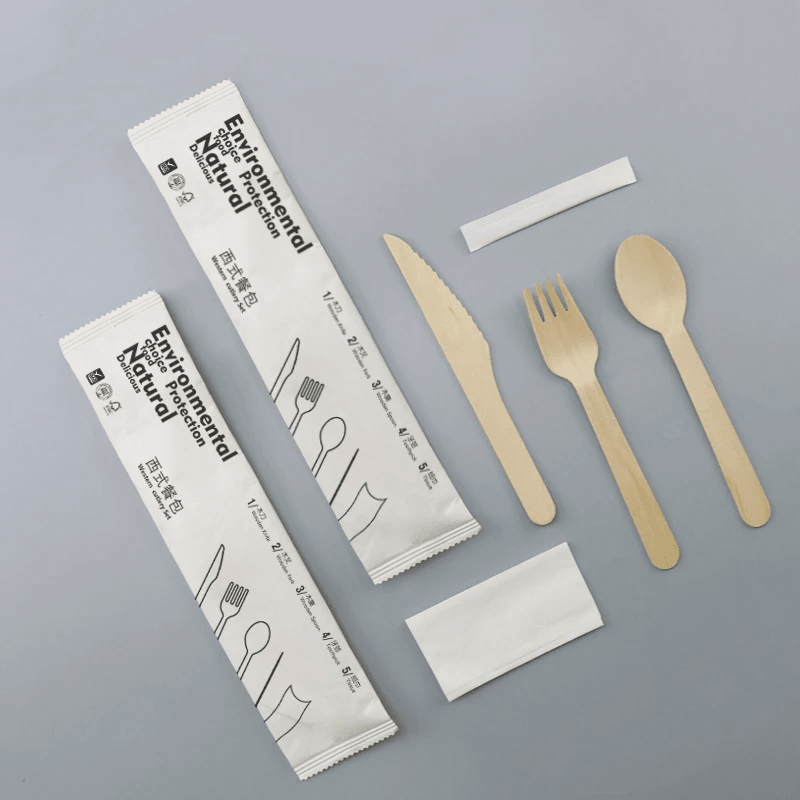Introduction

In a world increasingly aware of its environmental footprint, understanding eco-friendly disposable cutlery has never been more essential. As gatherings, picnics, and parties continue to thrive, the demand for sustainable options rises alongside it. So, what is the most environmentally friendly cutlery? The answer lies in making informed choices that align with our values while minimizing waste.
Understanding Eco-Friendly Disposable Cutlery
Eco-friendly disposable cutlery encompasses utensils designed to break down naturally after use, thus reducing plastic pollution. These alternatives often include materials like bioplastics, bamboo, and sugarcane fiber—each offering unique benefits and characteristics. To find the best eco-friendly disposable cutlery for your needs, it’s crucial to understand these materials and their impact on the environment.
Why Choose Biodegradable Options
Choosing biodegradable options is not just a trend; it's a commitment to protecting our planet for future generations. Unlike traditional plastic cutlery that takes centuries to decompose, biodegradable alternatives can break down within months under proper conditions. This shift is vital in answering the question: what is the best alternative to plastic cutlery? By opting for biodegradable choices, we can significantly reduce landfill contributions and promote a cleaner ecosystem.
The Benefits of Using Sustainable Cutlery
The benefits of using sustainable cutlery extend beyond environmental concerns; they also encompass health and social responsibility aspects. Many eco-friendly utensils are made from natural materials free from harmful chemicals found in conventional plastics, making them safer for food contact. Plus, supporting top biodegradable cutlery manufacturers fosters innovation in sustainable practices while encouraging a market shift towards greener products—ultimately helping us all embrace a greener lifestyle.
What Makes Cutlery Eco-Friendly
Defining Eco-Friendly Disposable Cutlery
Eco-friendly disposable cutlery encompasses utensils made from biodegradable or compostable materials that do not contribute to pollution or waste accumulation. The best eco-friendly disposable cutlery includes options like bamboo, bioplastics, and sugarcane fiber, which are all derived from sustainable sources. By opting for these alternatives, consumers can significantly reduce their carbon footprint while enjoying the convenience of single-use items.
The Importance of Materials Used
The materials used in creating eco-friendly disposable cutlery play a critical role in its overall sustainability. For instance, bamboo is a rapidly renewable resource that grows quickly without pesticides, making it an excellent choice for environmentally conscious consumers. Similarly, bioplastics derived from corn starch or sugarcane fiber are designed to break down more efficiently than traditional plastics—making them ideal contenders when asking what is the best material for disposable cutlery.
Common Misconceptions
There are several misconceptions surrounding eco-friendly options that can lead consumers astray when searching for the most environmentally friendly cutlery. One common myth is that biodegradable products are always compostable; however, not all biodegradable items break down effectively in standard landfills or home composting systems. Additionally, some people believe metal cutlery is inherently better due to its durability; yet metal often requires significant energy for production and may not be practical for single-use situations—thus raising questions about what is the best alternative to plastic cutlery.
What is the Best Material for Disposable Cutlery

Comparing Bioplastics and Bamboo
Bioplastics and bamboo are two popular contenders for eco-friendly disposable cutlery. Bioplastics, made from renewable biomass sources like corn starch or sugarcane, break down more easily than traditional plastics but can still take time to decompose fully. On the other hand, bamboo cutlery offers a completely natural alternative that not only biodegrades quickly but also has a unique aesthetic appeal—making it a strong candidate for anyone seeking the best material for disposable cutlery.
While bioplastics may seem like an innovative solution, they can sometimes contribute to plastic pollution if not disposed of correctly. Bamboo's rapid growth rate and renewability make it an attractive option when considering sustainability. Ultimately, both materials have their merits; however, bamboo often edges out bioplastics in terms of environmental friendliness.
The Role of Sugarcane Fiber
Sugarcane fiber is another fantastic material that deserves attention when discussing eco-friendly disposable cutlery options. Often used in plates and bowls as well as cutlery, sugarcane fiber products are compostable and can break down within 90-180 days under proper conditions. This makes them an excellent choice for those wondering what are the most environmentally friendly disposable plates or utensils to pair with them.
Moreover, sugarcane fiber's production process generates less waste compared to traditional plastic manufacturing methods—further enhancing its green credentials. When searching for alternatives to plastic cutlery, sugarcane fiber offers a versatile solution without compromising on strength or usability. So if you're looking for something that aligns with your sustainable lifestyle while still being functional, sugarcane fiber should be high on your list.
Why Metal Isn't Always the Best Choice
While metal utensils might seem like an appealing alternative when considering what is the best alternative to plastic cutlery due to their durability and reusability, they come with their own set of challenges. For starters, metal utensils require significant energy during production and involve mining processes that can harm ecosystems—making them less eco-friendly than other options like bamboo or sugarcane fiber-based products.
Additionally, using metal utensils at events where disposability is key can be impractical; transporting heavy metal cutlery back home after use may not align with convenience needs during gatherings or picnics. Furthermore, many people prefer single-use items in certain situations where washing up isn't feasible; thus making biodegradable materials more suitable overall.
In conclusion, while metal has its place in our kitchen drawers at home for everyday use or special occasions requiring sturdiness over disposability—it's essential to weigh these factors against sustainability goals when choosing disposable options like eco-friendly disposable cutlery.
Top Biodegradable Cutlery Manufacturers

Unitedpakstore: Sustainable Packaging Solutions
Among the top biodegradable cutlery manufacturers is Unitedpakstore, which specializes in sustainable packaging solutions that include an impressive range of eco-friendly disposable cutlery. Their offerings prioritize both quality and environmental responsibility—making them a go-to choice for businesses looking to reduce their carbon footprint without sacrificing performance. If you’re wondering what is the best material for disposable cutlery, Unitedpakstore’s products made from renewable resources provide an excellent answer.
Unitedpakstore stands out by offering customizable options tailored to specific events or branding needs while maintaining a focus on sustainability. Their dedication extends beyond just providing biodegradable utensils; they also educate customers about making informed choices regarding what are the most environmentally friendly disposable plates available alongside their cutlery offerings. This holistic approach sets them apart in a crowded marketplace.
Comparing Quality and Price
When it comes down to choosing among top biodegradable cutlery manufacturers, comparing quality and price can feel overwhelming—but it doesn’t have to be! The best eco-friendly disposable cutlery should offer not only sustainability but also durability at a reasonable price point. While some brands might charge a premium for their eco-conscious products, others offer competitive pricing without compromising on performance.
It’s essential to assess factors like material composition when determining value; after all, what is the best alternative to plastic cutlery if it can’t withstand use? Many leading brands provide samples or bulk purchasing options that allow you to test before committing fully—this can be especially helpful for event planners or businesses looking at cost-effective solutions long-term. Ultimately, investing in high-quality biodegradable options pays off by aligning your values with your purchasing decisions while contributing positively toward our planet's health.
What Are the Most Environmentally Friendly Disposable Plates

When it comes to hosting events or enjoying a picnic, choosing the right plates to pair with your best eco-friendly disposable cutlery is essential. The most environmentally friendly disposable plates not only complement your sustainable cutlery but also enhance the overall dining experience. By opting for plates made from biodegradable materials, you can ensure that your entire meal setup is aligned with eco-conscious values.
Best Options for Plates to Pair with Cutlery
For those seeking the best options for plates to pair with cutlery, look no further than compostable choices like sugarcane and bamboo. These materials are not only sturdy but also break down naturally, making them an excellent alternative to traditional plastic options. When considering what is the most environmentally friendly cutlery and plate combination, these biodegradable plates shine brightly in terms of sustainability and functionality.
Additionally, palm leaf plates have gained popularity due to their unique aesthetic and strength; they are perfect for both casual gatherings and formal events alike. Choosing these innovative plate solutions ensures that you can serve meals confidently while minimizing environmental impact. Remember, when you're asking yourself what are the most environmentally friendly disposable plates? The answer lies in selecting materials that prioritize both quality and sustainability.
Materials That Make a Difference
Understanding which materials make a difference in eco-friendly tableware is crucial if you want to make informed choices about your dining setup. Biodegradable options like bagasse (sugarcane fiber) and PLA (polylactic acid) derived from cornstarch offer excellent alternatives that break down in composting environments. These materials not only provide durability but also align perfectly with your choice of best eco-friendly disposable cutlery.
Another standout option is recycled paper products that can be used as lightweight yet functional plates—ideal for snacks or lighter meals while ensuring minimal waste generation. It's important to consider how these materials contribute positively toward reducing plastic pollution when pondering what is the best material for disposable cutlery or plates? Remember: every small choice counts!
How Plates and Cutlery Work Together
The synergy between eco-friendly disposable plates and cutlery cannot be overlooked; together they create a cohesive dining experience that's both stylish and sustainable! When selecting your best eco-friendly disposable cutlery, ensure it pairs well with your chosen plate material—this prevents any mishaps during mealtime while maintaining an elegant presentation. For instance, sturdy bamboo utensils complement palm leaf plates beautifully, providing an aesthetically pleasing yet functional setup.
Moreover, using compatible materials helps reinforce the message of sustainability at gatherings or events where single-use items are often criticized for their environmental impact. By thoughtfully considering how plates and cutlery work together harmoniously, we take significant steps toward promoting greener lifestyles while enjoying our meals guilt-free! So next time you're pondering what is the best alternative to plastic cutlery? Remember that pairing it wisely will amplify its positive effects on our planet.
What is the Best Alternative to Plastic Cutlery
In a world increasingly aware of the environmental impact of our choices, finding the best alternative to plastic cutlery is essential. With so many options available, it can be daunting to sift through the myriad of eco-friendly disposable cutlery on the market. Fortunately, there are several sustainable materials that stand out for their environmental benefits and functionality.
Exploring Non-Plastic Options
When considering what is the most environmentally friendly cutlery, bioplastics and bamboo frequently top the list. Bioplastics are derived from renewable resources like corn or sugarcane, making them a popular choice among those seeking eco-friendly solutions. Bamboo cutlery, on the other hand, is not only biodegradable but also sturdy and stylish—making it an excellent option for both casual picnics and formal events.
Another noteworthy contender is sugarcane fiber cutlery, which boasts similar sustainability benefits while being compostable after use. These alternatives provide an effective way to reduce reliance on single-use plastics while maintaining convenience in dining experiences. As consumers become more conscious of their choices, exploring these non-plastic options can lead to a significant reduction in plastic waste.
How to Transition to Sustainable Choices
Transitioning from traditional plastic utensils to eco-friendly disposable cutlery doesn’t have to be overwhelming; it’s all about gradual changes! Start by incorporating biodegradable options into your daily life—whether at home or during events—by replacing plastic with materials like bamboo or bioplastics as you run out of supplies. This method allows you to ease into using sustainable products without incurring additional costs upfront.
Educating friends and family about these alternatives can also foster a culture of sustainability within your community. Hosting gatherings featuring eco-friendly disposable plates and cutlery will create awareness around what is the best material for disposable cutlery while encouraging others to make similar shifts in their habits. The key lies in making informed decisions that align with your values toward protecting our planet.
Cost Analysis: Eco-Friendly vs. Traditional
When evaluating cost differences between traditional plastic utensils and eco-friendly alternatives, it's essential to consider both short-term expenses and long-term benefits. Initially, some may find that high-quality biodegradable options come at a premium compared to conventional plastic cutlery; however, this investment pays off when considering environmental impact over time. Additionally, many top biodegradable cutlery manufacturers offer bulk purchasing options that make switching more economical for businesses or large events.
Moreover, as demand for sustainable products continues to grow, prices for items like bamboo or bioplastic utensils are likely to decrease further due to increased production efficiency and competition among manufacturers. Ultimately, choosing the best eco friendly disposable cutlery may require some upfront investment but leads toward creating a healthier planet—an invaluable return on investment!
Conclusion

In a world increasingly aware of its environmental footprint, embracing eco-friendly disposable cutlery is not just a trend—it's a lifestyle choice. By opting for the best eco-friendly disposable cutlery, we can contribute to a healthier planet while still enjoying the convenience that disposables offer. The journey toward sustainability begins with small yet impactful decisions that resonate throughout our communities.
Embracing a Greener Lifestyle
Transitioning to sustainable options like biodegradable cutlery is an essential step in reducing plastic waste and promoting ecological balance. What is the most environmentally friendly cutlery? It’s one that decomposes naturally and doesn’t contribute to landfill overflow or ocean pollution. Choosing products from top biodegradable cutlery manufacturers ensures that your choices are not only practical but also beneficial for the planet.
Making Informed Choices for Events
When planning events, making informed choices about what you serve can elevate your gathering while being kind to Mother Earth. Selecting what is the best material for disposable cutlery involves considering both functionality and sustainability, ensuring that your guests enjoy their meals without guilt over environmental impact. Remember, pairing eco-friendly plates with your chosen cutlery can enhance the overall experience while showcasing commitment to sustainability—what are the most environmentally friendly disposable plates? Look for those made from natural materials like bamboo or sugarcane fiber.
Creating a Positive Environmental Impact
Every decision we make contributes to our collective impact on the environment; thus, understanding what is the best alternative to plastic cutlery is vital in this endeavor. By choosing biodegradable options over traditional plastics, we help mitigate pollution and promote responsible consumption practices among peers and community members alike. Ultimately, creating a positive environmental impact isn't just about individual choices; it’s about inspiring others to follow suit and fostering a culture of sustainability.


